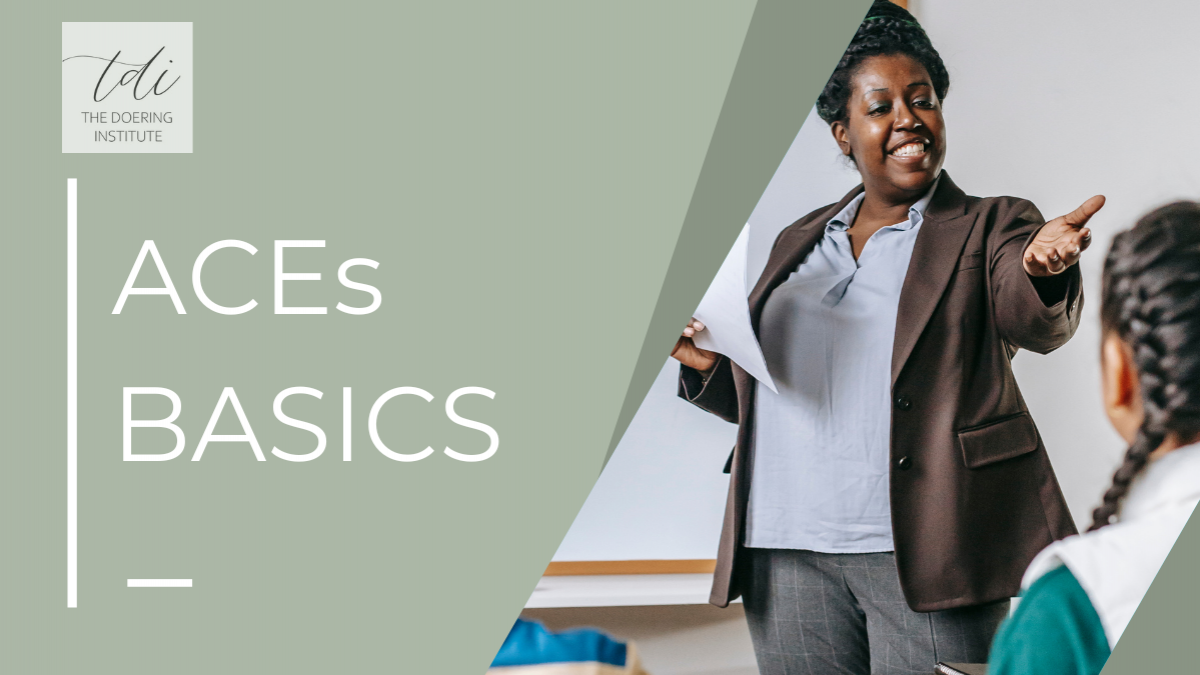Do you REALLY know about ACEs?

Learn: what ACE stands for, how the original study on adverse childhood experiences led to an explosion of research, and why educators should care.
This is the first part of a three part blog post series on ACEs. You can find the second part here and the third part here.
This month, we are talking about ACEs at TDI and we know that by now, most teachers have heard of them. But there are misconceptions out there and misinformation, so we are doing a series about what they are, how they can be useful in our teaching practice, and in what ways we should and shouldn't be using them.
First up, let's talk about what ACEs are:
When we hear about ACEs, we often are hearing about "adverse childhood experiences" more broadly, and this acronym has become synonymous in many circles with childhood trauma. In its original form, this is a list of specific events that can lead to childhood trauma that were used by researchers to determine if there were correlations between childhood trauma and negative outcomes in adulthood (like incarceration, heart disease, and early death). The researchers found that they could predict whether someone would have negative life outcomes by knowing how many ACEs they had experienced. The more higher a person's ACE score, the more negative outcomes were expected.
The CDC-Kaiser Permanente Adverse Childhood Experiences (ACE) Study is well-known for being one of the largest studies on how childhood trauma impacts an individual’s well-being in adulthood. The original study was conducted from 1995 and 1997, and collected data on over 17,000 patients. In this study, Felitti et al. (1998) found a significant correlation between childhood trauma and poor outcomes in later life. The study’s list of childhood traumatic events, known as “adverse childhood experiences” (ACEs) includes childhood abuse (emotional, physical, and sexual), neglect (emotional and physical), and household challenges (violence against mother, substance abuse of parent, mental illness in the house, divorce, and incarceration of a parent). This list of ACEs has been used as a tool for assessing trauma, scoring one point for every ACE that someone has experienced. Subsequent studies have verified the measure to be reliable, and as of April 2021, the original ACEs study (Felitti et al., 1998) has been cited over 13,000 times in academic literature. This tool was not intended to screen for trauma, but rather as a research tool to “determine the population impact of the cumulative effect of childhood stress” (Anda et al., 2020, p. 2).
The long-term implications of trauma seem obvious to those of us who have learned about trauma-informed education--but connecting the dots between childhood trauma and adult life through this research study helps because we have evidence (not just theory) of how ACEs correlate with adulthood outcomes, which can help us ask better questions about causation. We can develop deeper compassion for people who have these outcomes and also a sense of urgency for children who may be on that trajectory.
The original ACE study looked intentionally at a set of potentially traumatic events, but when you hear the term "adverse childhood experiences" used in schools today, the term is likely being used more broadly to describe any event that could cause lasting harm for children. We appreciate that the original study has brought about conversation about how childhood trauma impacts people in adulthood, and it has brought about a larger conversation regarding childhood trauma in general. The types of questions people have begun to ask include:
- How does trauma impact brain development?
- How does trauma impact behavior?
- What can school staff do in terms of prevention of and response to trauma in children?
- Who needs to be trained in trauma-informed care? (HINT: everyone!)
It is an exciting time to be teaching because now, more than ever before, we know how to care for the most vulnerable students. There is hope for growth, health, and healing for students who have been through difficult things, and teachers can make a difference by equipping themselves with a trauma-informed mindset and a set of easy-to-implement tools that help enhance connection and improve their confidence in working with students who struggle.
References
Anda, R. F., Porter, L. E., & Brown, D. W. (2020). Inside the adverse childhood experience score: Strengths, limitations, and misapplications. American Journal of Preventive Medicine.
Felitti, V. J., Anda, R. F., Nordenberg, D., & Williamson, D. F. (1998). Adverse childhood experiences and health outcomes in adults: The Ace study. Journal of Family and Consumer Sciences, 90(3), 31.
 Jessica Doering
Jessica Doering 